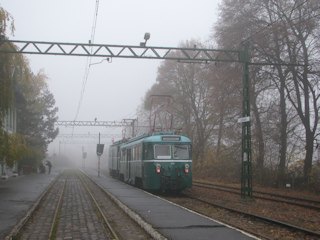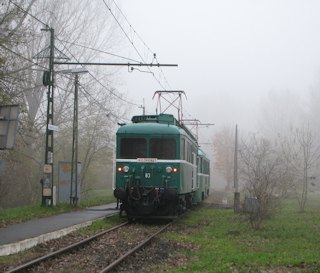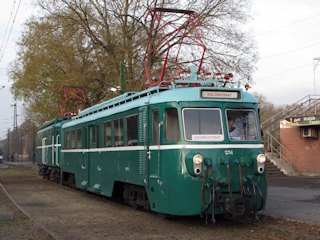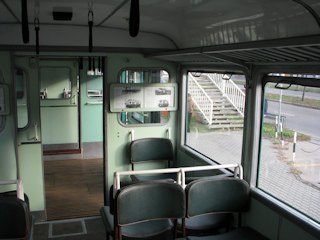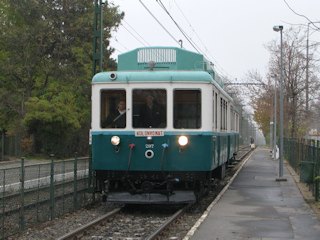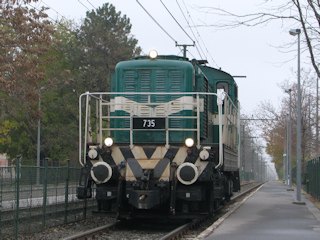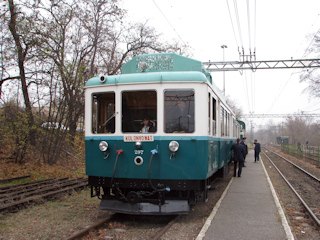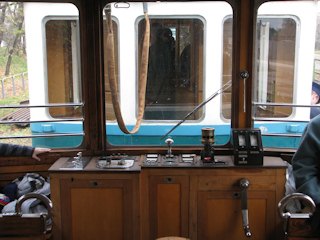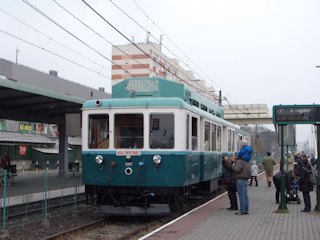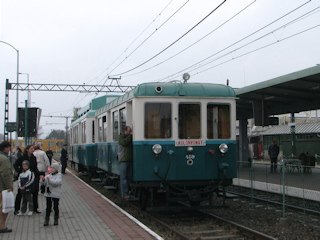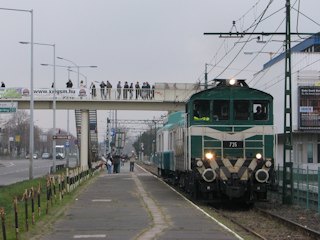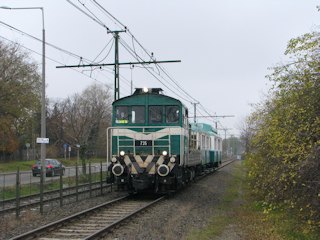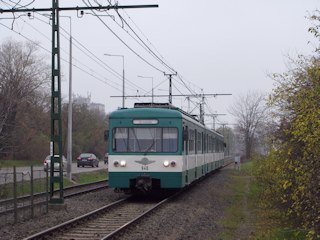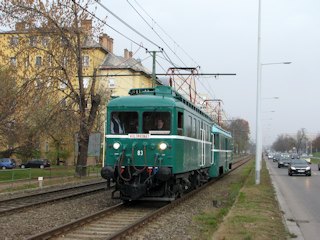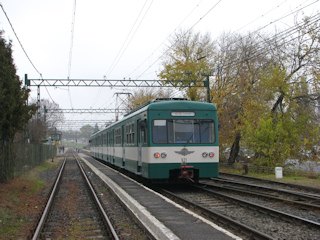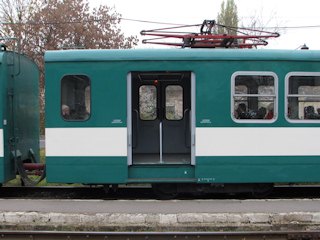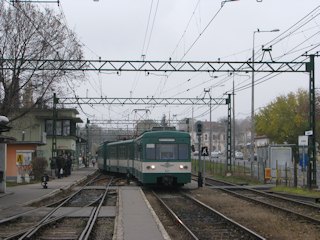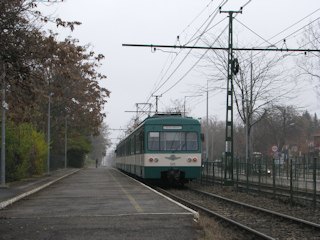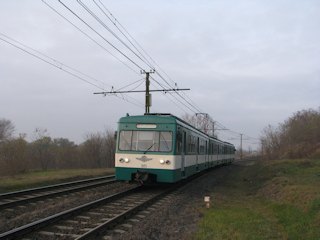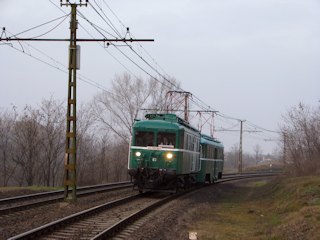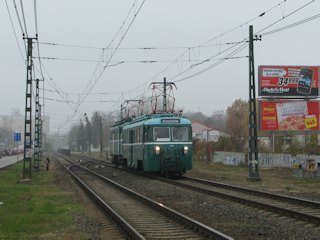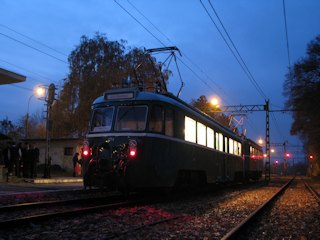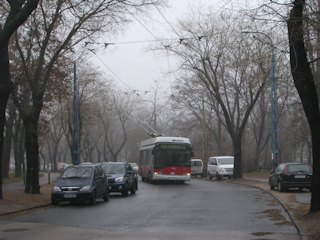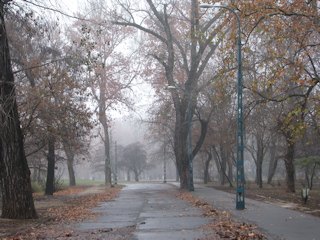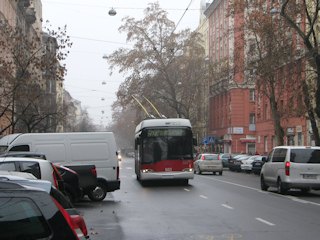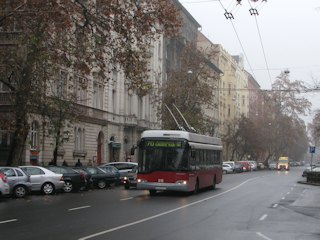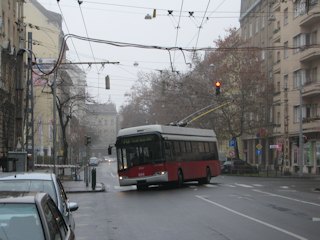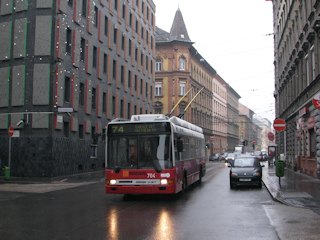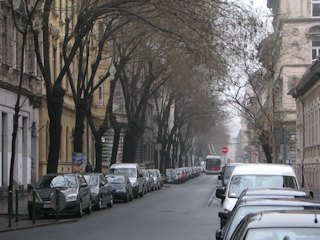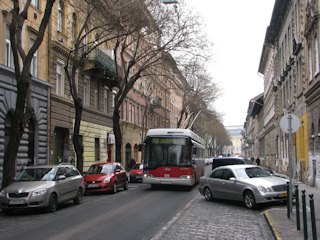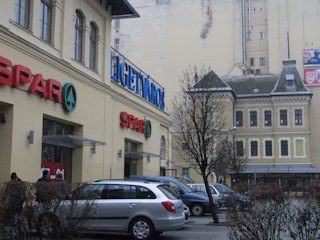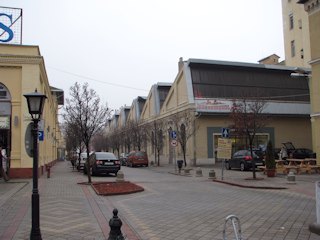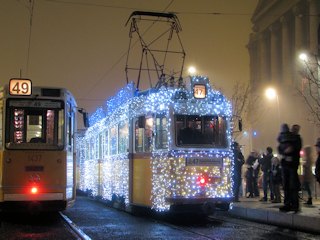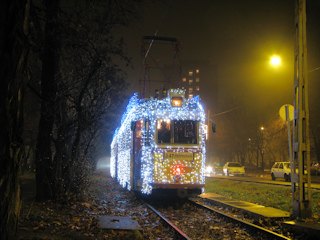Trams of Hungary and much more...
Spring to Winter 2012
The Budapest HÉV has also turned 125
Although its first line was opened in August 1887, the Budapest HÉV also celebrated its 125th anniversary in November. Now, the HÉV is a strange bird: it's not a proper heavy railway, and tramway fans also tend to neglect it, because it's not urban enough. It's a typical inbetweener, and it cannot even be seen as urban rapid transit either, because... because frankly, it's not rapid. On the other hand, it's an unsung hero that helped turning Buda, Pest, Óbuda and their vicinity into a modern metropolis on the turn of the 19th and 20th century! Budapest is still not a solid urban formation, and 125 years ago it was just villages gathering around three historic cities. It needed means to move workers, products and crops in an area that's now called an urban agglomeration, and fortunately Budapest horse tram company BKVT wanted to capitalize on this. They launched their first such train service to Soroksár and Dunaharaszti (the foundation of today's HÉV line H6 to Ráckeve, nowadays adding up to 40 kilometers) in 1887, and one year later the lines to Szentendre (today's H5, 21 kilometers in length) and Cinkota (resulting in today's H8 and H9 lines, together about 30 km). There were other lines, too, sometimes built by independent enterpreneurs, other times by affiliated companies, and the result is a network that's not a real network anymore: parts of it were converted to tramway lines (route 12 and 14, 41 and 47, 42 and 50, and parts of 52), others were abandoned. BUT, there are still 4 lines called a HÉV - unfortunately not connected to each other directly.
BKV celebrated the anniversary on the Gödöllő line, which has two services: H8 running to Gödöllő via Cinkota and Kerepes, and H9 running to Csömör via Cinkota and a single-track stretch that was once part of the original alignment to Gödöllő. One of the participating heritage trains consisted of M.VIII-class EMU number 251 and L.VII-class locomotive number 83. On these pictures we see them at the beginning and at the end of the day (November 24 to be exact) at Csömör station, terminus of the H9 service (left) and at the stop Cinkota-alsó (right).
Number 83 is basically a locomotive with a passenger cab: ten of these bulky beasts were built in 1943 and 1951 - the first six during World War 2. The vehicles were originally meant to be locomotives, but in the war it seemed a good idea to enlarge the frame and build seats into it. The fact that it only had one door per side (located at more than a meter high!), was not a problem in those days. Because of these qualities, the product was soon nick-named after the German heavy tanks Tiger ("Tigris"). Although the vehicles were still designated as locomotives (hence the letter "L" in the class name - it should've been an "M" for rail-cars), they were used in solo, too, but it was more common to see them towing coaches or even two of them hauling longer trains. From the turn of the 70s/80s they were at last used solely as freight locomotives, and of course for internal transports. This is how they survived: at least 6 or 7 are still operational, even though freight service on the HÉV was abandoned in 1996!
The M.VIII-class was built in 1952, basically as a proper "passenger version" of the L.VII: it had stronger motors, lower bogies and a much more comfortable passenger cab with a double central entrance. They were used until 1991-92, but only one survived. The photo to the left was taken at Gödöllő (railway) station, the outer terminus of the H8 line - the flyover to the right spans the main line to Miskolc. To the right: the interior of the vehicle. It might look spartan, but the seats are comfortable, the heating is strong, and the windows are large anc can be opened wide - in contast to the current rolling stock of M.Xa EMUs. And I think it also has a much better riding comfort those East-German monsters...
A video of these two electric beasts.
The other heritage train used on November 24-25 was diesel-eletric coach number 297 (DM.XII-class), with its control cab car number 459 (P.XXIII-class), seen to the left. To the right: a DL.XVI diesel-electric locomotive - we'll get back to it later.
The DM.XII+P.XXIII unit is not really characteristic for the BHÉV: the motor cars started their lives at the vicinal railway company ACsEV in South-Eastern Hungary in 1906/07. They had gasonline motors driving generators (diesel motors were retrofitted later), and were considered very modern for that time and also looked quite posh. The driving trailer came from a series of railway carrieges used by the ACsEV, from which two were rebuilt to driving trailers. After the peace treaty of Trianon, most of the ACsEV lines belonged to Romania, so they were cut or abandoned, and most of these vehicles were transferred to the state railway company MÁV. Quite a few years later, in 1959 BHÉV launched a new service in Csepel, running south from the terminus of the current line. This had only one track running on the side of the street, and was unelectrified, so the ex-ACsEV vehicles seemed a good choice. The cars received new, steel-frame bodyworks in 1961, and I think this conversion turned out quite nice, without the boxy, clumsy look of some other rebuilds. The short line in Csepel was closed in 1965, but the vehicles could still find usage during catenary maintenance, as fast trains, and on the short unelectrified shuttle beteween the Ráckeve line and Taksony. They were then withdrawn between 1968 and 71.
Csömöri
HÉV + kavicsbányai átvágás on a larger map
The ACsEV train was shuttling between Örs vezér tere and Kerepes, via the branch to Csömör and the unelectrified, rarely-used connection between Csömör and Kistarcsa. Normal trains take the straight route from Cinkota, but this detour is more interesting if you ask me.
The ride on the heritage coach, with bits of how the unelectrified stretch looks like (pretty much like any side-line in the countryside).
The train was running on its own from Kerepes to Örs vezér tere...
... but on the way back it was towed by class DL.XVI diesel-electric locomotive number 735. A product of Ganz-MÁVAG, this locomotive is also used by MÁV as class M44 (it was also used by PKP as class SM40 and SM41, by JZ as class 641, by BDZ as class 51, as an industrial shunter in Turkey, etc). BHÉV purchased them from industrial users for the Ráckeve line. After 1976, when the whole line was electrified, some of them was sold, but a few were retained for freight usage and rolling stock transports between HÉV lines. Two of them is sill in use, and a third one is displayed in the Szentendre museum.
Since I very rarely go near the HÉV, I used this opportunity to take photos of normal trains, too: to the left Mátyásföld, Imre utca. To the right: the electric heritage train between Rákosfalva and Örs vezér tere.
To the left: Cinkota station seen from the west. To the right: the M.Xa is basically a high-floor EMU with tinkered steps at the doors to make good for the lack of high platforms.
To the left: a train from Csömör changes tracks at Cinkota as it makes its way to Örs vezér tere. To the left: the Mátyásföld, Imre utca.
A short video of these HÉV trains.
Near Kerepes: these photos show the most striking attribute of this line: left-hand-side running!
As a perhaps interesting bit of trivia, one should mention, that while most of Hungary has swapped from left to right in July 1941, Budapest remained on the left side until November of the same year (necessiting side swapping points at the city limits). Fortunately Budapest trams have always had doors on both sides, but buses had to be rebuilt, just like stops, reversing facilities, turnouts. Why this line remained as it was, is a mistery...
Two more pictures of the M.VIII - or the "Cucumber" as it's sometimes called.
I take photos of trolley buses just a bit more often than of HÉV trains. Still, because of the withdrawal of the ZiU-9A, I made December an exception from my "no trolley buses" policy.
To the left: Olof Palme sétány. To the right: these unused overhead posts behind Ötvenhatosok tere are remnants of the original route of trolley buses heading for Hősök tere.
Damjanich utca was one of those big city streets with trams until the end of World War 2, after which the line was not rebuilt.
As usual, I also recorded videos.
To the left: a Solaris coming from Bajza utca arrives to Damjanich utca. To the right: Ikarus 412T in Wesselényi utca.
Nefelejcs utca seen from different corners.
Trolley buses in the dark.
The former tram depot in Damjanich utca - used by trolley buses until the 1990s - is still there, as a remarkable relic of industrial history.
The now traditional Christmas Tram was operating again during the Winter of 2012/13. I only had time to go and see it once, and even then I was unable to get on board, because it was already full... To the left it's standing in the fog at Deák Ferenc tér, to the right it's Budafok, Városház tér, the other end of route 47.
And at the end of this page: my favorite video of 2012 - a sunday night along tram route 47, smothered in fog, with Christmas illumination and the Christmas Tram. Large cities rarely look this intimate!
